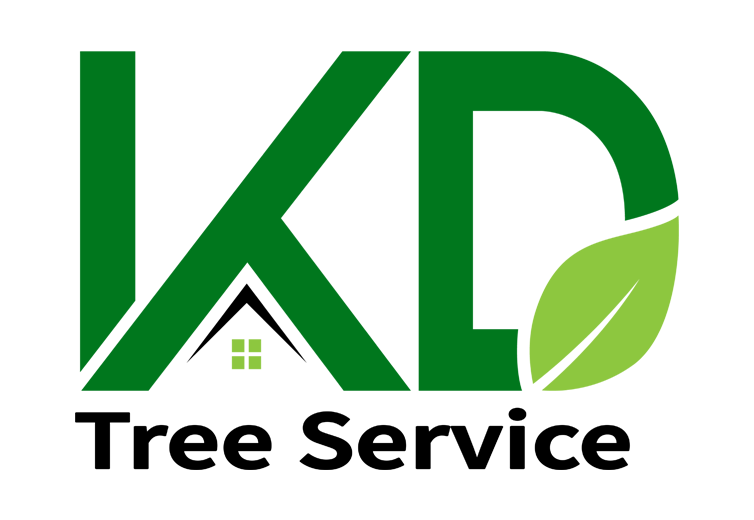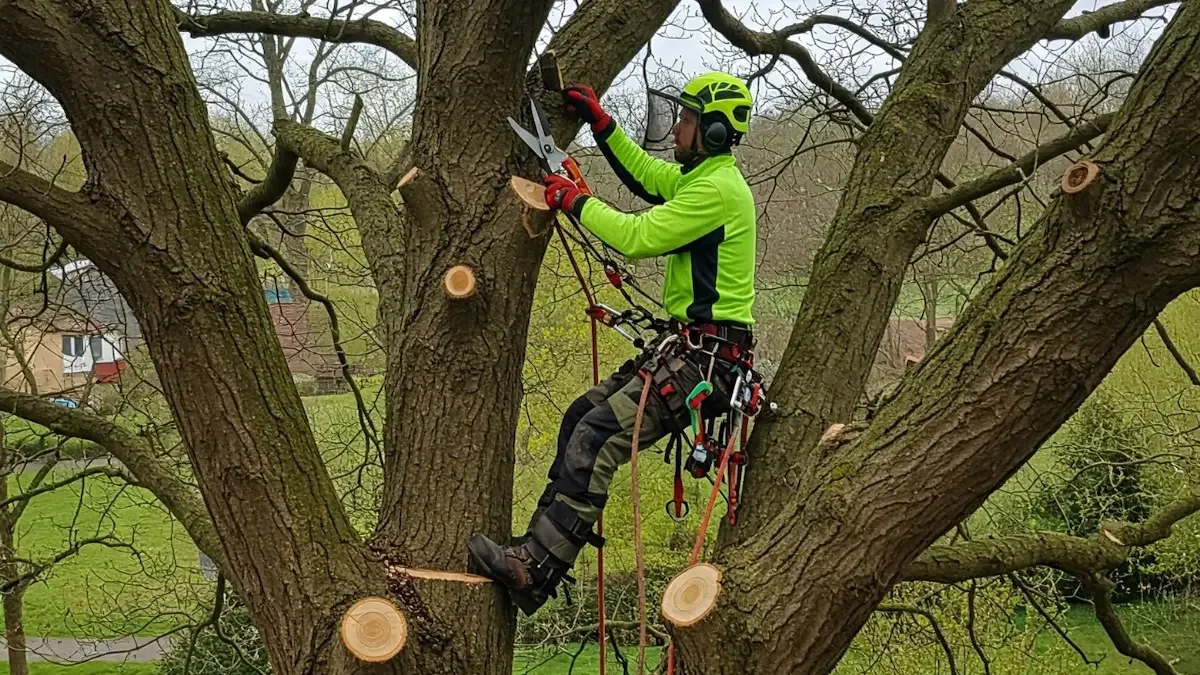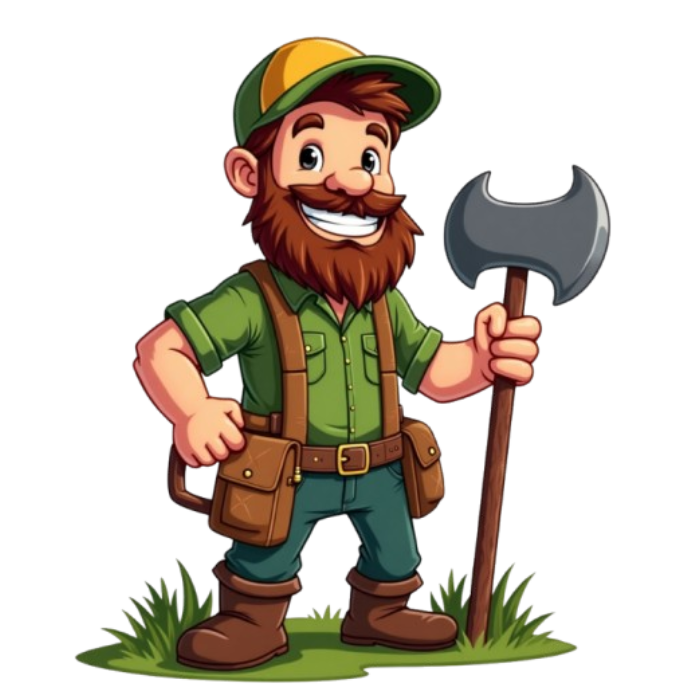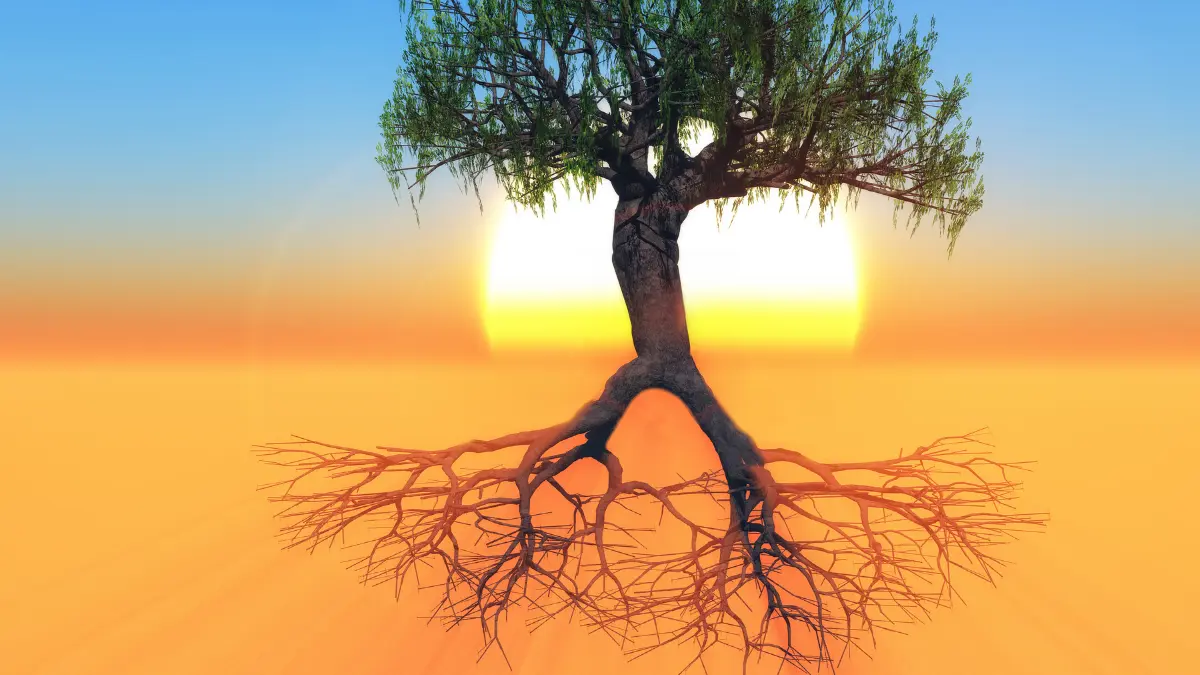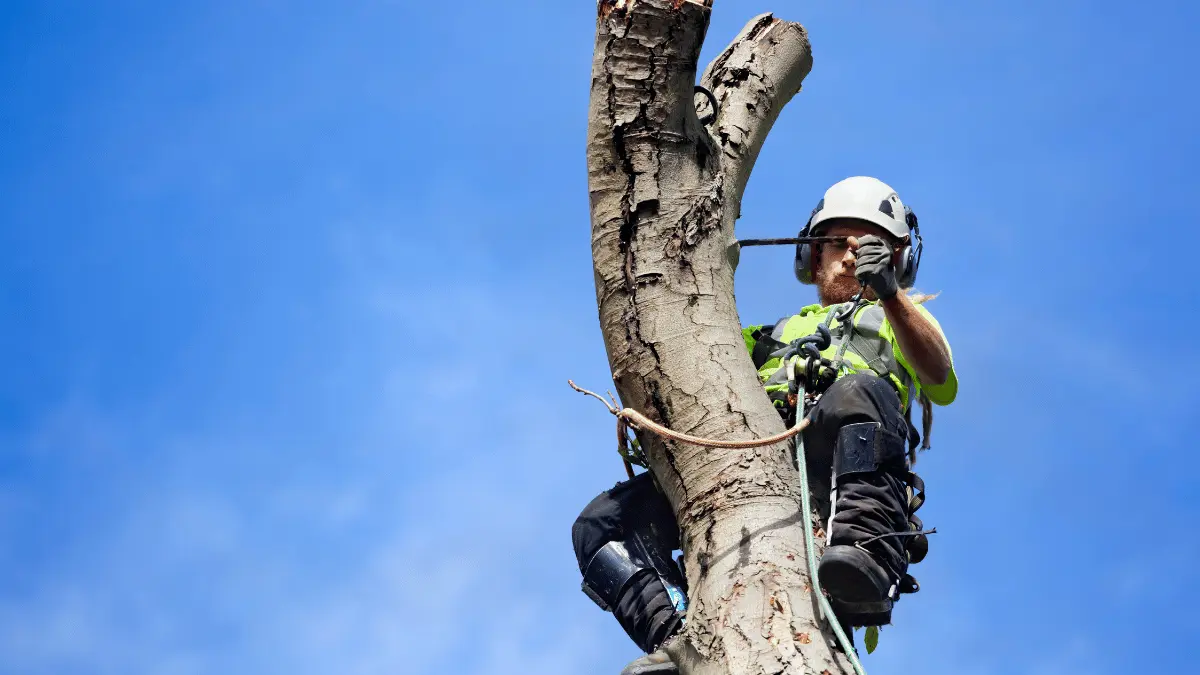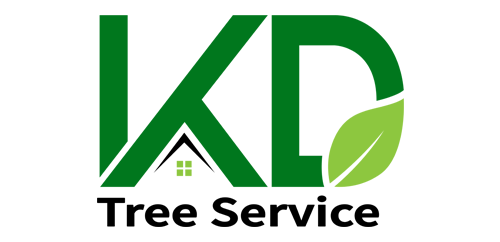Tree Pruning vs. Tree Trimming
It takes a lot of effort to keep trees healthy and visually appealing in any type of property. Among many tree-maintaining practices, tree pruning and tree trimming are the two most important techniques. Many homeowners and property owners get confused with these two terms, thinking that both are the same. But they are actually quite different.
Understanding the difference between tree pruning vs. tree trimming will help property owners learn the importance of these two techniques, and KD Tree Services offers tree trimming and tree pruning services across multiple states in the US.
So, without dragging, let’s learn the difference between pruning and trimming and why they are important for trees.

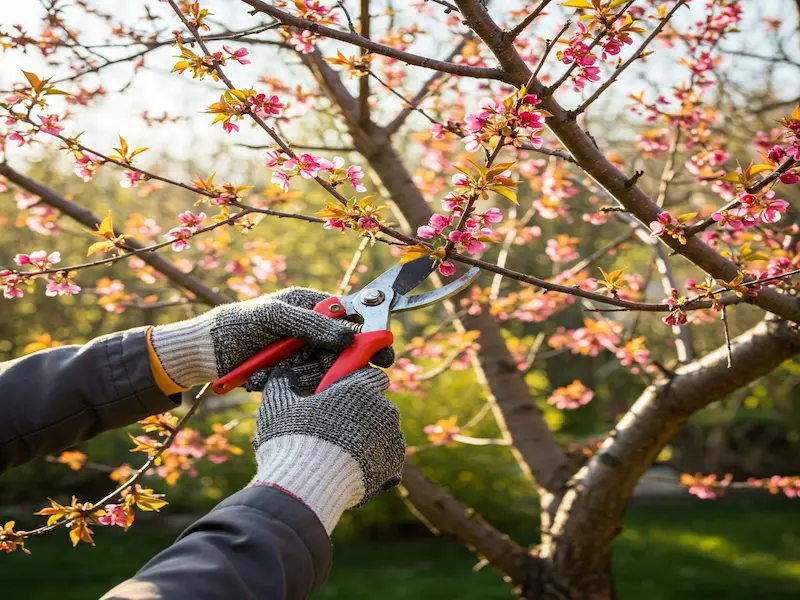
Key Takeaways: Pruning vs. Trimming
Pruning is for Health:
- It is the process of removing dead or diseased branches.
- Improves the airflow and sunlight penetration.
- Best timing- later winter or early spring
Trimming is for Aesthetics:
- Shaping trees for beauty.
- Clearing hazardous branches.
- Best timing- as required or 1-2 times a year.
Tips from the pros:
- Use sharp tools to avoid damaging the trees.
- Do not remove over 25% of a canopy in a single season.
Get the help of a tree care professional if the job looks risky.
What is the difference between tree pruning and tree trimming?
What is Tree Pruning?
Tree pruning is the process of removing damaged, diseased, or dead branches that can cause harm to other healthy parts of a tree. It helps in the prevention of the further spreading of diseases, and pests and promotes the growth and flourishing of a tree. It can also help in removing any unwanted limbs that will interfere with the growth of other parts.
The main goals of tree pruning are,
- Promoting the healthy growth of trees.
- Removing dead, diseased, and infested branches.
- Enhancing fruition and flourishing.
- Safe removal of hazardous branches and tree parts.
There are several different tree pruning methods used to prune a tree, depending on the nature of the location and the health of the tree. Below are some common tree pruning techniques used:
Crown thinning
This is the process of selectively removing branches in the canopy to reduce density and maintain overall shape. The main goal of crown thinning is to allow sunlight and air circulation to penetrate the tree. It will improve the tree’s health while reducing the risk of diseases. This process should be done carefully; otherwise, excessive thinning could weaken the tree.
Crown raising
Crown raising involves removing the lower branches of a tree to increase the clearance between the ground and the lowest branches. This technique often creates space for pedestrians, vehicles, buildings, or other infrastructure beneath the tree. It can also help improve visibility and access while maintaining the tree’s structural integrity.
Crown reduction
The crown reduction process is involved in the process of reducing the size of a tree canopy by cutting its branches carefully. This is done to reduce the height or the spreading of a tree when it is overgrown and becomes hazardous. This method helps to maintain the natural form of a tree and encourages healthy growing.
Directional pruning
Directional pruning is used to guide the growth of a tree to a certain direction. This method is utilized to prevent the branches from interfering with any structure or location. It will encourage branch growth in a safer direction and help maintain the tree’s health while minimizing the risks.
Tree pruning requires the correct tools to make sure to give minimal damage to the tree while performing clean cuts. Pruning shears are used for cutting small branches and loppers for thicker limbs. Pruning saws are used to prune the largest branches, which cannot be handled using smaller tools. Pole pruners help reach the higher branches without climbing the tree. The right tools will ensure precise tree pruning while promoting healthy growth.
For most trees, the best time to prune is during the dormant season, which is late fall to early spring. But for some tree species, this might be different. At this stage, the tree has stopped growing. Pruning at this stage helps reduce stress and prevent the transmission of diseases while promoting growth at the beginning of spring.
What is Tree Trimming?
Tree trimming refers to removing tree parts other than the health of trees. This process is usually done to improve the overall appearance of a tree and maintain its size. Trimming can promote the healthy growth of a plant and prevent the uncontrolled growth of branches. It allows the penetration of light to the lower branches as well.
The main goals of tree trimming are,
- Maintaining a clean appearance.
- Controlling overgrowth near structures and power lines.
- Encouraging a balanced canopy growth.
Proper tree trimming is important for maintaining the health, safety, and appearance of trees. Different trimming techniques are used depending on the purpose. Below are some of the common tree-trimming methods:
Hedge trimming
This process involves cutting back overgrown hedges to preserve a consistent appearance. It is commonly used in landscaping. Hedge trimming can prevent the hedges from becoming too dense.
Canopy shaping
Canopy shaping is all about trimming branches in a selective manner to improve the natural structure of a tree. This will enhance the overall appearance and growth. It can also help increase sunlight penetration and air circulation, which reduces the risk of getting diseases.
Clearance trimming
When there are branches that block buildings, roads, sideways, or powerlines, this method is used to remove them. It improves safety by taking early precautions from falling or damaged branches. This method is important when it comes to urban areas where trees can be grown close to different structures.
Just like tree pruning, tree trimming also requires special tools to ensure an accurate and safe result. Hedge trimmers shape and maintain the looks of small trees and shrubs. Chainsaws are helpful in cutting large branches or in the removal of limbs. These are mainly used in heavy trimming tasks. For fine-trimming jobs like cutting small branches, hand pruners can be a perfect option.
When trimming a tree mainly depends on the type of the tree. It may be required for a tree to be trimmed every 1-2 years to keep its shape and improve health. Slower-growing trees do not need frequent trims.
Key Differences Between Pruning and Trimming
Choosing between pruning and trimming depends on your needs and specific requirements.
| Characteristic | Pruning | Trimming |
|---|---|---|
| Purpose | Improving tree health | Enhancing overall appearance |
| Tools | Pruning shears, loppers, pruning saws, pole pruners | Hedge trimmers, chainsaws, hand pruners |
| Frequency | As required | Regularly |
| Techniques | Targeted branch removal | General branch removal |
| Best for | Large fruit and flowering trees | Ornamental trees and bushes |
| Outcome | Strong and healthy trees | Aesthetically pleasing trees |
| Impact on trees | Improves the health of trees | Enhances the appearance of trees |
When to Prune vs. When to Trim
One thing that you should understand is that tree pruning is mainly done when trees have health issues, and tree trimming is mostly for beauty.
You can do tree pruning when,
- There are dead or diseased branches.
- Trees are overgrown and lack stability.
- There are storms and seasonal changes.
And tree trimming when,
- Branches extend towards buildings, walkways, or power lines.
- Trees appear uneven or messy.
- The landscaping requires a more polished appearance.
If you have no idea whether a tree needs trimming or pruning, get help from a local certified arborist at KD Tree Service. They can assess the trees and recommend the best solutions.
Common Mistakes to Avoid
To protect trees’ health and safety, avoiding common mistakes when trimming and pruning is crucial. Here are some common mistakes that we came across:
Over-pruning
Removal of too many branches and leaves can stress out a tree. This will weaken the structure and make it vulnerable to diseases and pests.
Using dull or improper tools
Dull tools can create rough cuts, leading to slow healing and the risk of infection.
Trimming in the wrong season
Wrong-season trimming can cause the risk of attracting pests and diseases.
Improper cutting techniques
Making random, unaware cuts can damage the natural healing process of a tree.
Ignoring safety protocols
Always follow safety guidelines or hire a tree service professional to do the job and prevent dangerous outcomes.
Regional Considerations
KD Tree Service operates in regions with various climates, from the humid Southeast to the cooler Northeast and the dry conditions of California. These climate differences influence the best pruning and trimming practices.
The warm, humid climates of Georgia, South Carolina, and North Carolina support many local tree species. Pruning is best done in late winter or early spring before the growing season begins.
In New Jersey and New York, cold winters and warm summers make winter pruning ideal for maples and oaks. This helps prevent disease and encourages strong spring growth.
In California, the drier climate favors drought-resistant trees. Over-pruning in summer can stress trees due to heat and limited rainfall.
Some region-specific tips for pruning and trimming trees across KD Tree Service’s operating states can be given below:
Avoid pruning palm trees during hurricane season to prevent storm damage in Georgia. In South Carolina, eliminate heavy pruning of live oaks in spring to prevent the spread of tree diseases in late winter.
In North Carolina, prevent pruning pine trees during summer to reduce the risk of infestations. In New York, prune fruit trees in late winter to improve fruit production and disease resistance. Avoid over-trimming drought-sensitive trees in California during summer to stop excessive water loss.
Learn more about tree pruning and trimming best practices by region from Penn State Extension
Why Hire a Professional?
Pruning and trimming trees can seem simple, but it comes with considerable risks when done improperly. DIY pruning poses safety risks, such as falling branches or injury from tools, and the use of inappropriate techniques can lead to tree stress, disease, or even death. This is where hiring a tree care professional like KD Tree Service comes into play.
Benefits of KD Tree Service:
Certified Arborists:
Our team includes certified arborists who understand tree biology, ensuring proper care and trimming techniques.
State-Specific Expertise:
We have in-depth knowledge of local tree species, climate conditions, and best pruning and trimming practices in each state, helping trees flourish in their environment.
Advanced Equipment and Insurance:
We use the latest equipment for efficient, safe trimming and pruning, and our services are fully insured, giving you peace of mind.
FAQs
Conclusion
Tree pruning and trimming are essential for maintaining your trees’ health, safety, and aesthetics, but they serve different purposes. Pruning is focused on removing dead or damaged branches to improve the tree’s health, structure, and growth. Trimming is generally done to shape the tree or shrub and maintain its appearance. Both are important for preventing risks, encouraging strong growth, and ensuring trees survive year-round.
The importance of professional tree pruning and trimming cannot be amplified. KD Tree Service offers expert services tailored to your needs, with certified arborists, knowledgeable and skilled tree care professionals, and advanced equipment to do the job right.
Schedule your pruning or trimming service today! Contact us for a free consultation, and let us help you keep your trees healthy and safe.

